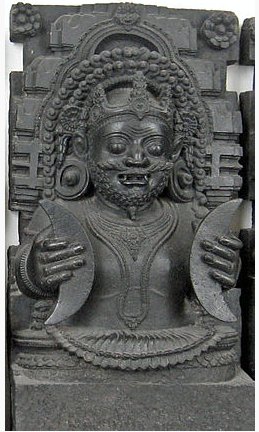2. What is the name of λ Aquarii? Allen: "λ, 3.8, red, is the most prominent of the first stars in the Stream. Proclus followed Aratos in callin it 'Υδωρ', the Water; and others, 'Εκχυσις', the Outpouring; Aratos describing it, Like a slight flow of water here and there // Scattered around, bright stars revolve but small; although these titles, appropriated by Bayer for λ, originally were for the whole group set apart as the Stream. λ, with about 100 stars surrounding it, was the 23rd nakshatra Catabhishaj, the Hundred Physician, whose regent was Varuna, the goddess of the waters and chief of the Adityas, the various early divinities of Hindu mythology, and all children of Aditi, the Sky and the Heavens. With ι, σ, and φ, it was the Chinese asterism Luy Peih Chin, the Camp with Intrenched Walls; but this included stars in Capricornus and Pisces." Thus there is no specific name for λ, which is quite in order because it signifies darkness - only when properly seen should an individual name be given. "Shatabhisha, also known as Chathayam or Sadayam, or Shatabhishak or Shatataraka is the 24th nakshatra in Hindu astronomy. It corresponds to the star γ Aquarii. The ruling planet of this nakshatra is Rahu." (Wikipedia)  ... In Hindu tradition, Rahu is a cut-off head of an asura, that swallows the sun or the moon causing eclipses. He is depicted in art as a serpent with no body riding a chariot drawn by eight black horses ... According to legend, during the Samudra manthan, the asura Rahu drank some of the divine nectar. Sun and moon realized it and they alerted Mohini (the female avatar of Vishnu). Before the nectar could pass his throat, Mohini cut off his head. The head, however, remained immortal. It is believed that this immortal head occasionally swallows the sun or the moon, causing eclipses. Then, the sun or moon passes through the opening at the neck, ending the eclipse ... Rahu is a legendary master of deception who signifies cheaters, pleasure seekers, operators in foreign lands, drug dealers, poison dealers, insincere & immoral acts, etc. It is the significator of an irreligious person, an outcast, harsh speech, logical fallacy, falsehoods, uncleanliness, abdominal ulcers, bones, and transmigration ... (Cfr at Heka.) Heka is λ Orionis and from there to λ Aquarii there are 263 days:
63 are to be added to the glyph numbers in order to reach the right ascension day at the assumed date of the G text. It means 63 glyphs precede the beginning of side a, the side of light. For instance is moe in Ga1-20 (at the heliacal rising of the Heavenly Gate star) corresponding to right ascension day 63 + 21 = 84. The preceding Ga1-19 corresponds to day number 163 according to the Gregorian calendar (80 + 83 = 163). Possibly we should regard 163 as 100 + 63. Day 100 is April 10:
This logic will then identify March 4 (see Gb2-29) as the end of another possible 63-day season. There are 229 glyphs on side a. Rahu reminds me of Rehua (Antares) - the star which like a 'fruit' (hua) is rising up from the ashes (rehu). There are 6 black fruits in the preceding Ga7-15. From Antares at glyph 186 to Gb2-30 there are 100 days:
In Ga7-15 we can count 71 * 5 = 355. The morning star period of Venus is 263 days long (equal to the distance from Heka to λ Aquarii) and 8 dark nights precede:
The evening star period of Venus seems to have 'mud in the eye' at left (the back side) in Ga1-18. The last night of the evening star is evidently illustated as tagata gagana in Ga1-11:
The full moon oval in Ga1-16 corresponds to time of the the heliacal rising of λ Leporis, 80 days from equinox at the time of G. The curious figure inside is where we could expect a hare to be. A little dot in front signifies the importance of this glyph. | ||||||||||||||||||||||||||||||||||||||||||||||||||||||||||||||||||||||||||||||||||||||||||||||||||||||||||||||||||||||||||||||||||||||||||||||||||||||||||||||||||||||||||||||||||||||||||||||||||||||||||













